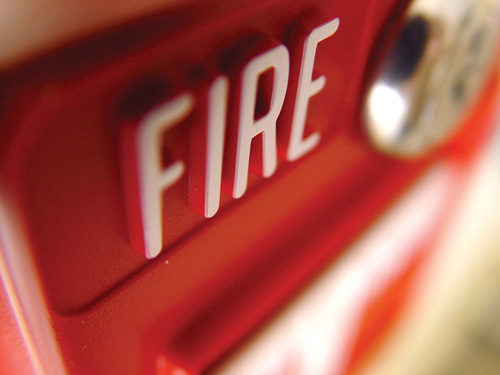Fire safety: Every worker plays a role

When it comes to fire safety on the job, everyone can play a role – not only by recognizing hazards but also by taking action to resolve them. The National Safety Council recommends performing regular self-inspections in the workplace and creating a comprehensive inspection checklist to follow. Common causes of workplace fires include:
- Electrical equipment: Electrical equipment presents a number of fire hazards, including faulty wiring and starters, improper fuses, and poorly done repairs. Also, carefully review any solvent’s Safety Data Sheet before using it to clean electrical equipment, as it may be flammable.
- Flammable liquids: The council states that a liquid is defined as flammable if it emits enough vapors to burn at temperatures lower than 100° F, whereas liquids that produce enough vapors to support combustion when heated over 100° F are combustible liquids. Because these liquids are so volatile and are commonly found throughout various industrial settings, it is important to follow proper guidelines when handling, using and storing them. Ensure these types of liquids are used only in ventilated areas away from ignition sources, such as open flames or sparks.
- Friction: Overhead transmission bearings and shafting can accumulate dust, making them ignition sources. To prevent this, keep bearings well-lubricated and maintain good housekeeping to keep dust at bay.
- Stored gases: If your workplace has stored cylinders on the premises, ensure the storage areas feature automatic sprinklers, ventilation and fire-resistant separations.
- Explosive dusts: The buildup of even a small amount of dust can result in a serious incident.
- Plastics: Be aware that plastics – commonly used for storage – tend to burn hotter and faster than wood, and standard sprinkler systems may not be able to adequately contain these types of fires.
- Portable heaters: NSC considers portable heaters to be serious fire hazards and discourages their use in the workplace.
- Smoking hazards: Clearly define where smoking and non-smoking areas are in your workplace and strictly enforce smoking restrictions with employees.
An effective fire protection program takes careful planning with a focus on prevention, NSC states. It is the supervisor’s responsibility to ensure proper housekeeping standards are developed and followed regarding fire safety.

